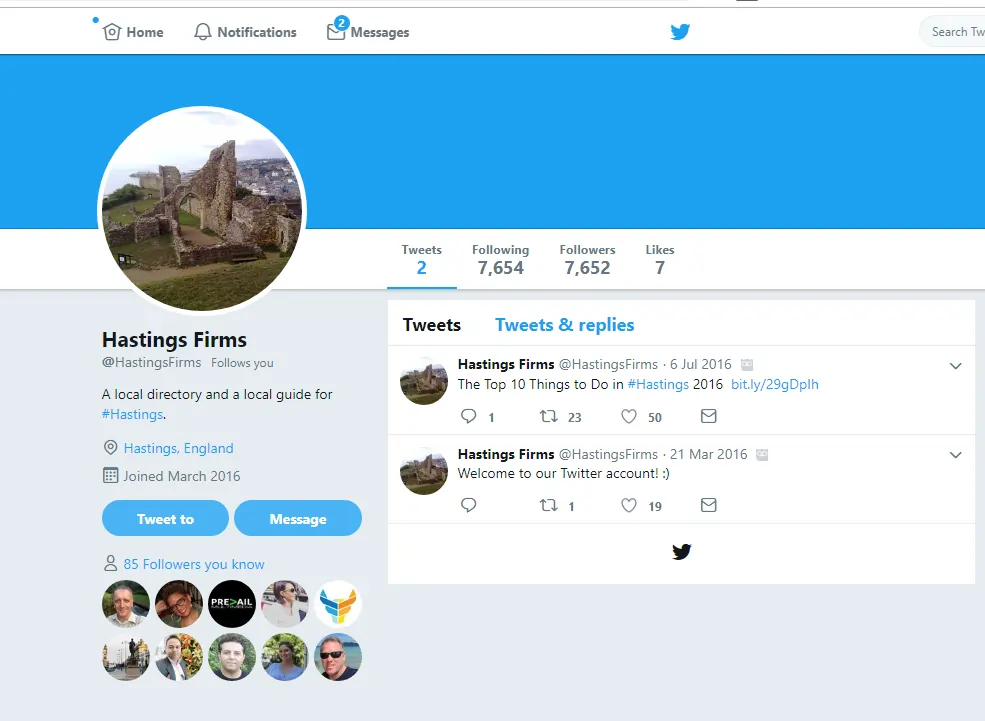Social media platforms like Twitter allow people to connect and share ideas. However, some users create fake accounts for nefarious purposes like spreading misinformation, harassment, and scams.
Tracing a fake Twitter account back to its owner can be challenging but sometimes possible. This comprehensive guide will provide tips and strategies to help trace fake Twitter accounts.
Table of Contents
Why Do People Create Fake Twitter Accounts?
There are various motivations for creating fake Twitter accounts:
- Spread propaganda or misinformation – Fake accounts are used to share false information to influence opinions and push certain agendas. This was evident during the 2016 US presidential elections.
- Troll or harass others – Some fake accounts are made to send abusive messages or tweets to other users. This allows them to hide behind a fake persona.
- Promote products/services – Brands or individuals may use fake accounts to spam others with promotions and ads. The fake engagement makes them appear more influential.
- Pump follower numbers – Buying fake followers is a common practice to inflate someone’s follower count and make them look more popular.
- Evade bans – If an account gets banned for breaking Twitter rules, a new fake profile can be made to continue similar behavior.
How to Spot Fake Twitter Accounts

Before attempting to trace a fake Twitter account, you need to be able to identify one. Here are some telltale signs:
- No profile photo – Many fake accounts do not have a custom profile photo and use Twitter’s default egg avatar.
- Suspicious handle – Names with many numbers or random characters are common for fakes. However, some can have handles similar to real people.
- No tweets or recent activity – If an account has zero tweets or has not posted in a long time, it is likely fake.
- Odd follower/following ratio – Fake accounts often have way more followers than those they follow.
- Suspicious tweets -Generic, repetitive content shared via scheduling tools hints that the account is fake.
- Bio does not match – Mismatched location and bio info can indicate a fake account.
- Newly created account – Accounts made very recently that exhibit other suspicious traits are likely fakes.
How to Trace a Fake Twitter Account
Tracing a fake Twitter account takes some digital sleuthing. Here are some tips:
Examine Account Details
- Scrutinize the profile info, tweets, and metadata for any clues about the owner. Names, locations, URLs, and photos can help unravel the fake identity.
- See if the account links to other profiles on Instagram or Facebook. Cross-checking details can reveal inconsistencies.
- Check who they follow/interact with. This network can provide context about the fake account’s intentions.
Analyze Tweets and Language
- The timing and content of tweets can reveal patterns. For example, politically motivated accounts may only tweet specific hashtags or keywords.
- Analyzing the writing style and language used in tweets can sometimes help uncover the actual user behind the account.
- Use sites like Grammarly to detect if tweets across accounts have a similar writing style. This can connect multiple fakes to one source.
Use Online Tools
- Twitter Audit – This free tool analyzes followers and estimates what percentage are real vs fake. This can uncover suspicious activity.
- Social Bearing – Finds how authentic an account’s interactions are by analyzing engagement stats. Fake accounts tend to have inorganic patterns.
- SparkToro – Uncovers detailed stats on an account, like average daily tweets, follower growth rate, etc., to spot bot-like activity.
- Botometer – Uses machine learning to detect if an account exhibits similarities to bots. It is useful for identifying cyborg accounts controlled by humans and bots.
- Followerwonk – Helps analyze an account’s followers and the accounts they follow. Cross-checking networks can find connected fakes.
Check Location Data
- If an account enables geotagging of tweets, use sites like Tweeplers to map tweet locations and track patterns.
- Fakers can spoof locations, but tracking consistent activity in one place may uncover where the user is based.
Report to Twitter
- Twitter has a form to report fake accounts by submitting screenshots and account details. Their internal tools can investigate further.
- Getting numerous people to report a fake account increases the likelihood of Twitter suspending it.
- Reporting networks of connected fake accounts helps Twitter identify misinformation campaigns.
Hire a Private Investigator
For high-priority cases like harassment or reputational attacks, it may be worthwhile hiring a professional social media investigator. They have paid tools and strategies to trace accounts and attribute them to individuals or organizations. This is generally a last resort due to the costs involved.
Also read: How to Find Twitter IP Address
Challenges in Tracing Fake Accounts
Twitter currently does not have many effective mechanisms to prevent fake accounts from being created in the first place. Their loose identity verification makes it easy to generate fake profiles. Here are some key challenges:
- VPN and Tor usage – Masking an account’s real IP address and location makes it untraceable to a geographic area.
- SIM card spoofing – Fake accounts can be tied to untraceable burner phone numbers obtained via SIM spoofing services.
- Easily faked details – Names, photos, and bios can all be fabricated, making it hard to verify an identity.
- Purchased followers/engagement – Buying followers and likes obscures bot-like activity and boosts credibility.
- No public access to data – Unlike Facebook Graph API, Twitter data is not accessible to analyze networks and connections.
Twitter’s Efforts Against Fake Accounts
Due to the massive scale of Twitter’s user base, eliminating fake accounts is an uphill battle. But the company is making gradual improvements:
- Acquiring companies like Smyte to bolster spam detection through machine learning.
- Updating reporting processes to make it easier for users to flag fake accounts.
- Enabling two-factor authentication and other steps to increase account security.
- Purging millions of suspicious accounts periodically to reduce automated bot networks.
- Using proprietary internal tools to identify coordinated manipulation campaigns.
- Paying bug bounties to security researchers to find vulnerabilities that allow fake accounts.
However, Twitter still lacks robust identity verification methods during sign-up. Experts recommend adding email/phone confirmation requirements and using CAPTCHA to help deter easy automation of fake accounts.
Best Practices to Avoid Being Fooled
While Twitter works to improve, users should be aware of best practices to avoid being fooled by fake accounts:
- Verify accounts before retweeting or engaging with their content. Check for red flags of fakeness.
- Look beyond follower counts. High followers don’t automatically mean an account is credible.
- Check for verified badges. This indicates Twitter has authenticated the identity behind an account.
- See if multiple sources are corroborated for claims made in tweets before believing them.
- Limit interactions with questionable accounts. Blocking fakes you uncover helps clean up your feed.
- Use common sense judgment on whether content seems designed to manipulate opinions deliberately.
The Future of Fighting Fake Accounts
To truly combat the growing threat of influence operations via fake accounts, experts suggest there needs to be cooperation between social media platforms, lawmakers, and intelligence agencies.
Some potential solutions proposed include:
- Creating a public national social bot registry to identify known fake account networks
- Requiring verified identification for political ad spending or coordinating campaigns
- Enacting laws with penalties for individuals operating mass fake accounts
- Forming dedicated cybercrime units to monitor and counter foreign misinformation campaigns
- Using machine learning and AI to become proactive about suspicious account activity ahead of human reviewers
Conclusion
Fake accounts are a complex challenge plaguing Twitter and other social networks globally. This guide provided diverse methods to trace accounts back to their owners using open-source tools manually.
However, Twitter and authorities must take more assertive technical and legal measures to get ahead of the sophisticated tactics bad actors employ. The spread of misinformation through fake accounts can be reduced with an informed public and improved policies.







